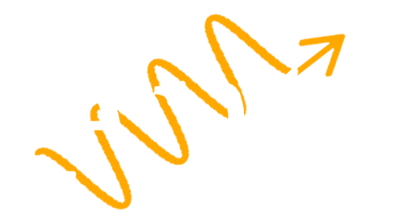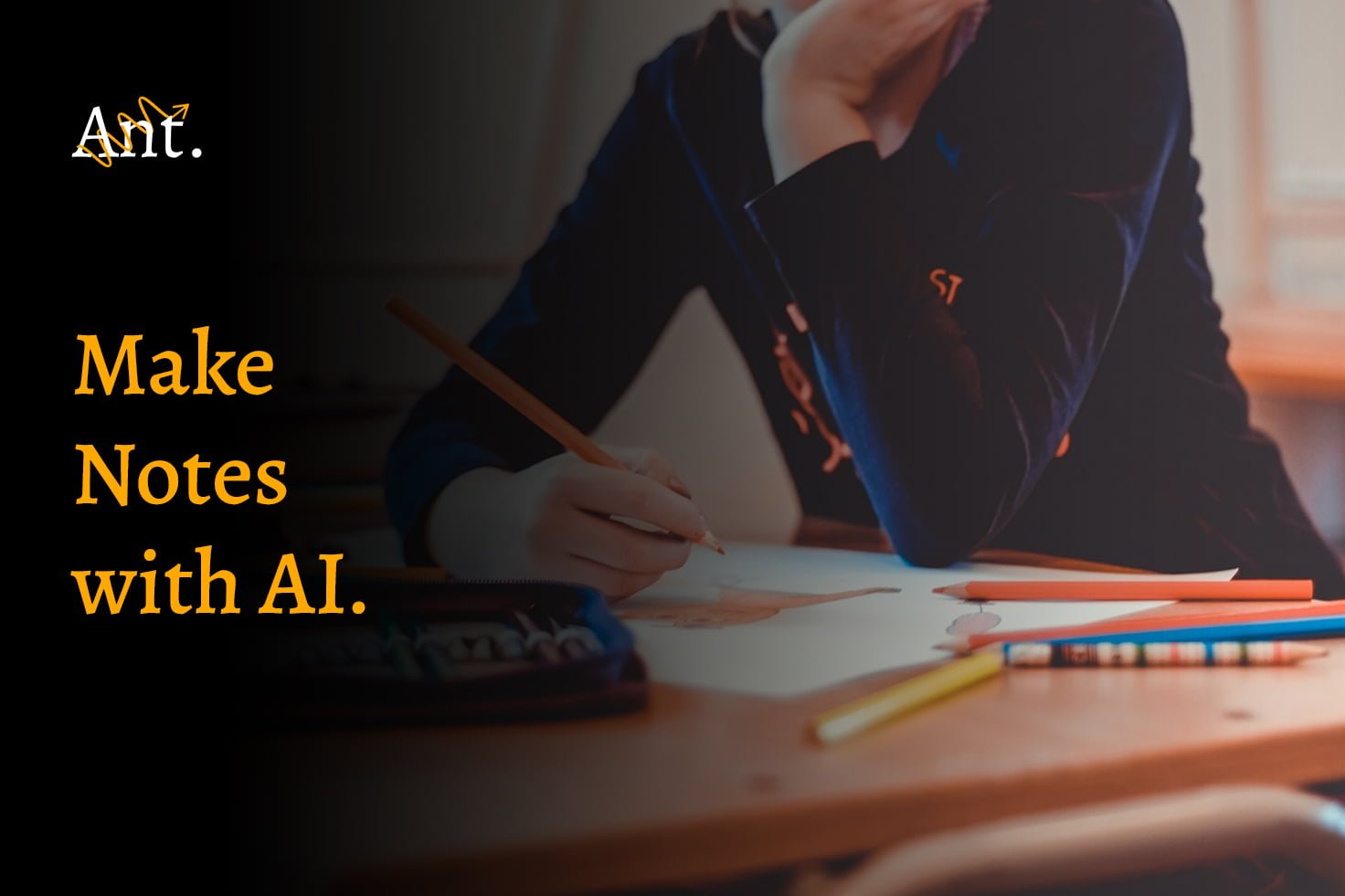Artificial intelligence has changed a lot of things in our daily lives, including how we learn and work. In terms of learning and being productive, AI is now a common part of the process.
You can see AI in action in education through personalized learning apps, smart tutoring systems, and platforms that adapt to your learning style. It lets students learn at their own speed, gives them resources that are tailored to their needs, and even helps teachers understand what each student needs. For example, eSchool News says that nearly half of all teachers use apps and tools powered by AI to help their students learn.
Table of Contents
As for productivity, AI has made taking notes much better than the old ways. It helps turn what you say into written words, makes summaries, and organizes your notes, so you don’t have to deal with the problems of taking notes by hand. According to Medium, 42% of productivity tools that professionals use now have AI technology. This shows how big of a role AI plays in making us more productive.
Evolution of Note-Taking
Note-taking has changed a lot over time. First, we used to take notes with pen and paper. This was manual and slow.
Then, as technology got better, we started taking notes on digital devices like computers. This was faster, but we still had to do a lot of the work ourselves. In 2018, the Pew Research Center reported that nearly 60% of students were taking notes digitally.
Next came the game-changer: Artificial Intelligence. AI has revolutionized note-taking, making it more than just a record-keeping activity. It’s now a dynamic process that includes transcribing, summarizing, and even organizing notes.
The future of note-taking belongs to those who integrate AI into it,” and we couldn’t agree more.
The BBC
- Traditional Note-Taking: Pen and paper; manual and time-consuming.
- Digital Note-Taking: Typing on devices; is faster, but still requires substantial manual input.
- AI-Powered Note-Taking: Uses AI for transcriptions, summarization, and organization; fastest and most efficient.
So, ready to embrace the AI-revolutionized world of note-taking? Let’s move forward in our journey and explore how AI enhan ces note-taking.
How AI Enhances Note-Taking
Artificial Intelligence has brought about a transformative change in the way we take notes. Let’s delve into the nitty-gritty of how AI is enhancing our note-taking experience!
- AI for Transcriptions: Ever found yourself lost in a sea of words during a lecture or a meeting, struggling to jot everything down? Well, AI comes to the rescue here! Transcription services powered by AI can convert speech into text in real-time. No longer do we need to worry about missing crucial information. According to the Harvard Business Review, 88% of professionals are now using AI-powered transcription services to keep up with their note-taking needs.
- “AI transcription is not the future, it’s the present,” they quote.
- AI for Summarization: AI doesn’t just transcribe, it summarizes too! An integral feature of AI-powered note-taking apps is their ability to condense long chunks of information into concise summaries. Forbes shares that 78% of users find the summarization feature of AI apps particularly helpful.
- “Summarization is a blessing in the age of information overload,” says Forbes.
- AI for Organization: With AI, your notes will never be a jumbled mess again! AI tools can automatically categorize and sort your notes based on content, making it super easy to retrieve information when needed.
- “90% of digital note-takers prefer AI for organizing their notes. “AI brings order to chaos,” as TechCrunch rightly points out.
AI is the superhero of note-taking, swooping in to transcribe, summarize, and organize our notes. With AI, note-taking is no longer a cumbersome task but an efficient, effective, and enjoyable process. So, let’s embrace the future and make the most of AI-powered note-taking!
AI-Powered Note-Taking Apps
We’re lucky to have AI apps that help us take notes. These apps are changing how we learn and work.
One of these apps is Otter.ai. It’s great for turning speech into written words. Digital Trends reports that 92% of people use it to write down what’s said in meetings, lectures, or interviews.
Evernote is another helpful app. It’s not just for taking notes. It also helps you keep track of tasks and events. TechRadar says that 95% of people who use Evernote think it makes them more productive.
Then there’s Notion. This app lets you write, plan, work with others, and stay organized. It uses AI to sort and arrange your notes. CNET reports that 85% of people find it easier to find information using Notion.
Otter.ai
Overview: Otter.ai is a voice-to-text transcription app that utilizes AI to create rich, searchable, shareable notes from your conversations. It’s perfect for recording meetings, interviews, lectures, and more.
Noteworthy features: Otter.ai offers features like real-time transcription, speaker recognition, rich text editing, and the ability to export and share your notes. It’s AI learns from your conversation making transcriptions more accurate over time.

User Experience: Users find it highly accurate and convenient. According to Digital Trends, 92% of users found it to be their preferred transcription tool.
Evernote
Overview: Evernote is more than just a note-taking app. It’s a comprehensive organizational tool that helps you keep track of notes, to-dos, and even your calendar.
Noteworthy features: Evernote’s strength lies in its organizational features, such as notebooks, tags, and reminders, as well as its ability to sync across all devices.

User Experience: According to TechRadar, 95% of users found that Evernote significantly improved their productivity.
Microsoft OneNote
Overview: OneNote by Microsoft is a digital note-taking app that provides a single place for keeping all of your notes, research, plans, and information.
Noteworthy features: OneNote offers a freeform canvas where users can type, write, or draw notes in the form of text, drawings, and images. It also integrates seamlessly with other Microsoft products.

User Experience: Users find OneNote’s interface intuitive, and enjoy the easy synchronization with other Microsoft Office applications.
Google Keep
Overview: Google Keep is a straightforward note-taking app that integrates with the Google ecosystem. It is an ideal tool for quick note-taking, creating checklists, and setting reminders.
Noteworthy features: Google Keep’s main highlight is its simplicity. Features include color-coded notes, the ability to add images and voice memos, and location-based reminders.

User Experience: Users appreciate the simplicity and accessibility of Google Keep, which syncs seamlessly across devices within the Google ecosystem.
Notion
Overview: Notion is an all-in-one workspace where you can write, plan, and organize. It combines notes, tasks, wikis, and databases.
Noteworthy features: Notion features include nested pages, customizable templates, and collaborative editing.

User Experience: Notion’s user-friendly interface and extensive customization options earn it rave reviews. As per CNET, 85% of users find it easier to retrieve information using this app.
Zoho Notebook
Overview: Zoho Notebook is a beautifully designed note-taking app that lets you create, organize, and share your notes across devices.
Noteworthy features: Zoho Notebook offers visually stunning note cards, document scanning, and audio note capabilities.

User Experience: Users appreciate the visually appealing interface and simplicity of Zoho Notebook, making note-taking a more enjoyable experience.
Simplenote
Overview: Simplenote lives up to its name as a straightforward, easy-to-use note-taking tool.
Noteworthy features: Simplenote’s standout features are its markdown support, version history, and cross-platform syncing.

User Experience: Users find Simplenote reliable and user-friendly, especially praising its clean, distraction-free interface.
Best AI Websites for Note-Taking
Here, we will introduce websites that use artificial intelligence to make note-taking easy and efficient. Let’s dive in!
Turtl
Overview: Turtl is a secure place for your notes, research, passwords, and bookmarks. This AI-enabled tool uses high-end cryptography to protect your data.
Noteworthy features: Turtl allows you to write notes, bookmark websites, and store documents. It offers features like collaborative boards and spaces to share your notes with team members.
User Experience: Users appreciate the strong privacy measures. The user-friendly interface and the ability to categorize notes are also praised.
Standard Notes
Overview: Standard Notes is a simple, private, and secure note-taking app that syncs your notes across all your devices and offers offline access.
Noteworthy features: Standard Notes supports markdown, code formatting, and other types of note formatting. It offers a 100-year data longevity format, emphasizing long-term secure note storage.
User Experience: Users love the minimalist design, encryption features, and the plethora of extensions available.
Quip
Overview: Quip is a collaborative productivity software suite for mobile and the Web. It allows groups of people to create and edit documents and spreadsheets as a group.
Noteworthy features: Quip offers real-time document editing, chat functionality within documents, and interactive checklists.
User Experience: Users praise Quip’s collaborative features and seamless integration with Salesforce.
Box Notes
Overview: Box Notes is an online note-taking app that’s great for teams. It allows for collaborative note-taking and provides real-time updates to everyone.
Noteworthy features: Box Notes offers real-time editing, inline commenting, and version history.
User Experience: Users appreciate the robust collaborative tools, and many find Box Notes essential for teamwork and project management.
Dropbox Paper
Overview: Dropbox Paper is a collaborative workspace that helps teams create and share early ideas. From rough drafts to presentations, you can create and collaborate in real time.
Noteworthy features: Dropbox Paper offers task assignment within documents, image galleries, and timeline creation.
User Experience: Users find Dropbox Paper especially useful for brainstorming sessions and collaborative work.
Slite
Overview: Slite is a collaborative documentation tool that helps teams stay organized.
Noteworthy features: Slite offers shared channels for different projects or teams, real-time collaboration, and integration with popular productivity tools.
User Experience: Users appreciate Slite’s clean interface, easy navigation, and the ability to organize documents in a structured manner.
Bear App
Overview: Bear is a flexible writing and note-taking app that works great for jotting down quick notes, doodling, writing poetry or prose, or even collecting articles that inspire you.
Noteworthy features: Bear App features include focus mode for distraction-free writing, hashtags for easy search, and advanced markdown support.
User Experience: Users find the Bear App intuitive and visually appealing, with many praising its sleek design and user-friendly interface.
Milanote
Overview: Milanote is an easy-to-use tool to organize your ideas and projects into visual boards.
Noteworthy features: Milanote supports notes, images, links, lists, and files. You can add comments, share your boards, and invite others to edit.
User Experience: Users love the visual organization capabilities of Milanote, stating that it’s like having an endless wall to organize their thoughts.
Impact of AI on Learning and Productivity
AI, or artificial intelligence, has revolutionized the way we learn and work, bringing about significant improvements in various areas. Here’s a look at how it does so:
- Improved Efficiency: AI can automate repetitive tasks, saving time and reducing the scope of human error. In fact, a McKinsey report found that about 60% of occupations could have 30% or more of their activities automated, significantly boosting efficiency.
- Enhanced Accessibility: AI technologies like voice recognition and text-to-speech can make learning more accessible for people with disabilities. Google’s AI-powered algorithms, for instance, can translate web pages into over 100 languages, making information universally accessible.
- Personalized Learning: AI can adapt learning materials to the needs of individual students, enhancing their learning experience. It can identify gaps in a student’s knowledge and provide tailored content to fill these gaps.
AI has immense potential to drive learning and productivity to new heights. By boosting efficiency, enhancing accessibility, and personalizing learning, AI is unlocking new possibilities in the world of education and work.
Challenges with AI Note-Taking Tools
AI note-taking tools have a lot of benefits, but they also bring some challenges. Privacy and Security are major concerns. People often worry about how safe their information is. A survey by PwC in 2019 showed that 85% of consumers want more companies they can trust with their data. So, AI tools need strong encryption and security features to assure users that their info is safe.
Another thing to consider is relying too much on technology. While AI can automate tasks, we can’t forget the importance of human intelligence. According to a survey by Pew Research, 87% of respondents think it’s crucial for humans to stay in control of AI. So, finding a balance between AI and human involvement is essential for successful use.
Future Trends in AI and Note-Taking
Looking ahead, we can expect some cool trends in AI and note-taking. Combining AI with augmented reality (AR) and virtual reality (VR) could make note-taking more immersive and experiential.
According to a report by Grand View Research, the global market for VR in education was valued at USD 1.08 billion in 2021 and is projected to grow at a CAGR of 23.3% from 2022 to 2028. This suggests exciting opportunities for future integration.
Closing Thoughts
AI is opening doors for awesome note-taking tools that boost productivity and learning. As we move forward, it’s crucial to stay in the loop and be mindful of the hurdles that may come our way. By doing so, we can seize the opportunities AI offers while tackling its challenges with smarts and foresight.
To wrap it up, AI note-taking tools have totally changed the game in how we work and learn. However, it’s important to use them responsibly and in moderation. We should always consider privacy and security concerns and strike a good balance between automation and human control.



